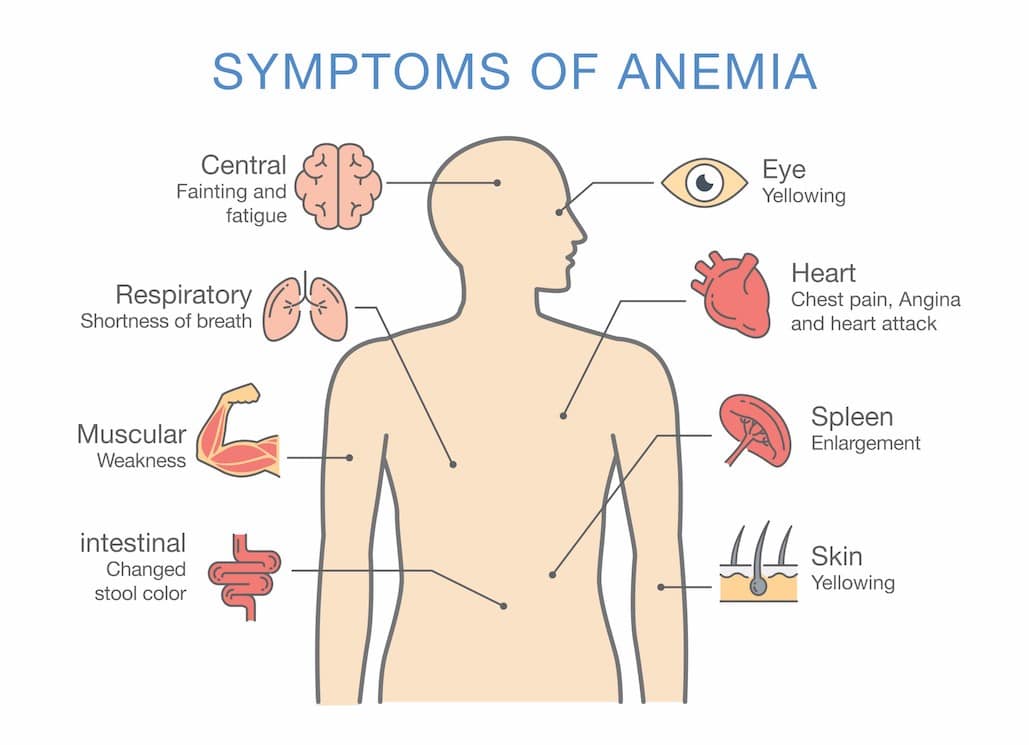5 in 10 women suffers from anemia in Gujarat, claims a study
March 07, 2020
Ahmedabad: In its recent study on anaemia, private laboratory chain Metropolis Healthcare said it has found that 6 in 10 women from 36 cities of India have low haemoglobin levels indicating iron deficiency, anaemia. Anaemia is a condition that develops when there is lack of healthy red blood cells or haemoglobin in the blood. The incidence of anaemia was reported highest in the 20-50 age group. For this study, Metropolis Healthcare had tested 17,00,000 samples of girls and women over a period of two years.
In Gujarat, the study tested 47,275 samples of girls and women. Among them, 5 in 10 samples were tested anaemic. In Gujarat, amongst the age group of 20-50, the anaemia prevalence was higher.
Dr Pranav Desai, Chief Pathologist who led the study, said, “The most common reason for anaemia is a deficiency of iron which can be taken care of with supplements and good nutrition. But in India, women continue to live with anaemia. Menstruating girls and women are more deficient due to the monthly blood loss. The most common signs to watch out foranaemia would be lethargy, unexplained fatigue, pale skin and pale eyes. In kids, more severe form of anaemia is characterized by a behaviour called as pica where the child builds a tendency to eat dirt, clay and other unusual substances. This is not a harmful behaviour and disappears once anaemia is cured.”
| National Data on Haemoglobin
Analysis of 17,00,000 samples tested for Haemoglobin in 36 cities |
|||||
| Age Group | Anaemia | Normal | Total | Anaemia | Normal |
| 0 to 10 | 27725 | 43635 | 71360 | 38.85 | 61.15 |
| 10 to 20 | 55774 | 52826 | 108600 | 51.36 | 48.64 |
| 20 to 30 | 242512 | 131933 | 374445 | 64.77 | 35.23 |
| 30 to 40 | 226007 | 125413 | 351420 | 64.31 | 35.69 |
| 40 to 50 | 165324 | 99632 | 264956 | 62.40 | 37.60 |
| 50 to 60 | 136265 | 101553 | 237818 | 57.30 | 42.70 |
| 60 to 70 | 123079 | 66423 | 189502 | 64.95 | 35.05 |
| 70 to 80 | 64819 | 27090 | 91909 | 70.53 | 29.47 |
| Above 80 | 23924 | 8445 | 32369 | 73.91 | 26.09 |
| Total | 1065429 | 656950 | 1722379 | 61.86 | 38.14 |
Gujarat Statistics on Anaemia
| Age Group | Anaemia | Normal | Grand Total | Anaemia (% figure) | Normal (% figure) |
| 0 to 10 | 383 | 699 | 1084 | 35.33 | 64.48 |
| 10 to 20 | 1265 | 1538 | 2817 | 44.91 | 54.6 |
| 20 to 30 | 4481 | 3391 | 7873 | 56.92 | 43.07 |
| 30 to 40 | 5348 | 3525 | 8877 | 60.25 | 39.71 |
| 40 to 50 | 4927 | 3666 | 8596 | 57.32 | 42.65 |
| 50 to 60 | 4105 | 3548 | 7658 | 53.6 | 46.33 |
| 60 to 70 | 4174 | 2378 | 6555 | 63.68 | 36.28 |
| 70 to 80 | 2033 | 861 | 2901 | 70.08 | 29.68 |
| Above 80 | 667 | 247 | 914 | 72.98 | 27.02 |
| Total | 27383 | 19853 | 47275 | 57.92 | 41.99 |
During the study, it was observed that often anaemia symptoms are mistaken as cause of stress and overwork. Dr.Desai commented on anaemia diagnosis,“While routine blood tests like Complete Blood Cell (CBC) count can give us an overall picture on the status of Hb and Red Blood Cell components, it is important to undergo thorough diagnosis to find out the exact cause of anaemia. Other causes of anaemia may include internal bleeding and our body’s inability to absorb iron. Whatever the cause, it is important to get diagnosed early on to avoid further complications and correct the condition, as soon as possible.”
He added, “While iron deficiency induced anaemia and pregnancy are two of the largest causes of mild and moderate anaemia, some cases of severe anaemia may have serious underlying causes, which may affect a person’s quality of life. These include Beta Thalassemia, Macrocytic Anaemia and other Chronic Diseases with permanent consequences.”
| Metropolis Healthcare’s guide to different types of Anaemia: The below table highlights the different causes of anaemia and their categorization | |
| Cause of Anaemia | Anaemia Type |
| Anemia Caused by Blood Loss | Gastrointestinal conditions such as ulcers, hemorrhoids, gastritis (inflammation of the stomach), and cancer. Menstruation and childbirth in women |
| Anemia Caused by Decreased or Faulty Red Blood Cell Production
|
Iron-deficiency Anemia
Vitamin deficiency, Bone marrow and stem cell problems |
| Anemia associated with other conditions | Advanced kidney disease, Hypothyroidism.
Other chronic diseases, such as cancer, infection, lupus, diabetes, and rheumatoid arthritis |
| Anemia Caused by Destruction of Red Blood Cells
|
Inherited conditions such as sickle cell Anemia and Thalassemia. Toxins from advanced liver or kidney disease. Inappropriate attack by the immune system (called hemolytic disease of the newborn when it occurs in the fetus of a pregnant woman), vascular grafts, prosthetic heart valves, tumors, severe burns, exposure to certain chemicals, severe hypertension, and clotting disorders |
Recent Stories
- Gujarat govt to form AI Task Force
- Khambhat police book 31 for attacking police personnel
- BJP wins Vav assembly by-election in Banaskantha
- Progress update of Vadodara - Dahod - MP Border section of Delhi-Mumbai Expressway
- Thaltej Gam Metro Station ready; likely to open in December 2024
- Over 5 lakh tourists visit Rani ki Vav in Gujarat in two years
- Vav Assembly seat by-election 2024 live results
